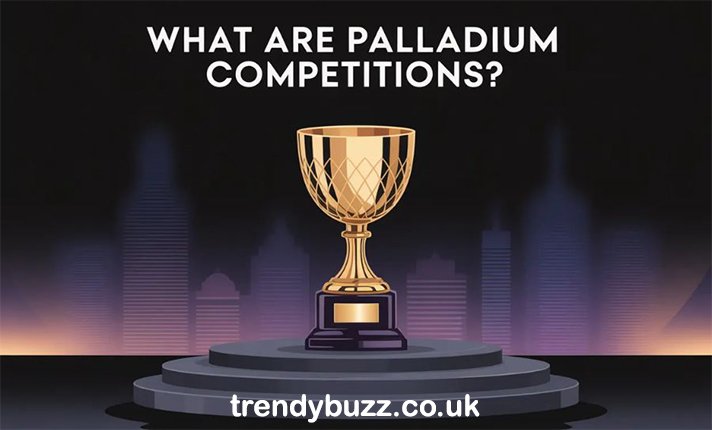Introduction
Palladium competitions have emerged across industries as focused contests that spotlight the unique properties and applications of palladium — the precious metal prized for its catalytic, electrical and aesthetic qualities. From science awards and innovation challenges to jewelry design shows and consumer prize draws, these competitions accelerate research, celebrate craftsmanship and sometimes even offer life-changing prizes.
What “Palladium Competitions” Means
The term is broad. It can refer to formal scientific awards such as the Palladium Global Science Award, industry-led innovation challenges that seek new sustainable uses for the metal, jewelry-design competitions that promote palladium in fine metalwork, or commercial consumer competitions run under the brand Palladium Competitions. Each type shares a common goal: to increase awareness of palladium, stimulate new uses, and reward excellence.
Major Types of Palladium Competitions
Scientific and Innovation Awards
High-profile contests like the Palladium Global Science Award invite scientists, startups and research groups to submit novel applications for palladium, with substantial prize pools designed to catalyze commercial and academic development. These competitions often involve expert panels, multi-stage judging and partnerships with industry bodies to help winners scale their innovations.
Industry Challenges and “Palladium Challenges”
Some initiatives—labelled as challenges—are framed around sustainability, recycling, and new market-creating applications for palladium. They typically encourage interdisciplinary teams to propose scalable use cases that can reduce waste, improve catalytic systems or open new markets for palladium-based technologies.
Design and Jewelry Competitions
Designers and jewelers have long looked to competitions to showcase palladium’s strength, whiteness and hypoallergenic properties. Partnerships between institutions like Central Saint Martins and bodies such as the International Palladium Board have led to juried shows that elevate contemporary palladium jewelry design and help young designers gain visibility.
Commercial Consumer Competitions
Separately, there are consumer-facing networks and companies using the Palladium name to run prize draws, raffles and giveaways promising cash, cars or holidays. These operate on different rules and regulatory frameworks from scientific contests and are typically structured to attract mass participation. The commercial entity Palladium Competitions Limited is a registered company in the U.K. that runs such offerings.
Why They Matter
Palladium competitions matter for three key reasons. First, they direct funding and attention to research that could unlock new industrial uses for a scarce metal. Second, design competitions help reposition palladium in consumer markets—especially in jewelry where platinum and white gold historically dominated. Third, commercial prize draws can build brand communities and finance marketing ecosystems that indirectly raise awareness about palladium and related industries.
How They’re Judged
Judging criteria vary by type. Science awards focus on novelty, feasibility, environmental impact and commercial potential; industry challenges add criteria like scalability and regulatory readiness. Design competitions weigh aesthetics, craftsmanship and market fit, while consumer raffles are governed by chance-based legal rules and transparent terms and conditions.
Notable Awards and Past Winners
There is a long tradition of awards connected to palladium’s scientific applications—medals and named prizes that recognize contributions to electrochemistry, corrosion science and chemical engineering. More recently, purpose-built initiatives such as the Palladium Global Science Award have been launched to provide targeted funding and accelerate practical applications. Historical medals and named awards continue to honor lifetime or field-defining work in related branches of chemistry and materials science.
Tips for Entrants
If you plan to enter a palladium competition, read the rules carefully and tailor your submission to the judging criteria. Scientists should emphasize novelty, reproducibility and environmental impact, and provide realistic development timelines and commercialization pathways. Designers must show clear material choices, high-quality imagery and an explanation for choosing palladium over alternatives. Consumers entering prize draws should keep confirmation records and understand eligibility, fees and odds.
Case Study: The Palladium Global Science Award
This award was created to surface scalable palladium technologies and to bridge lab research with industry adoption. With prize funds and industry partnerships, winners receive money, mentoring and exposure to manufacturers and investors.
Organizing Better Competitions
Fair, transparent rules and clear rubrics make competitions credible. Organizers should publish conflict-of-interest policies, judging criteria and provide post-award support such as incubation or investor introductions. Tracking outcomes—patents, startups or recycled metal volumes—helps measure impact.
Risks and Ethical Considerations
Competitions that promise large prizes can attract speculative entries and may unintentionally incentivize overstated claims. Scientific contests should therefore maintain rigorous peer review and validation steps. Consumer raffle platforms must comply with local gambling and promotional laws and be transparent about odds, data use and payout procedures.
The Future of Palladium Competitions
As palladium’s role in catalysis, electronics and clean technologies evolves, expect more targeted innovation prizes that link directly to decarbonization, circular-economy approaches and advanced manufacturing. Design competitions will likely push sustainable sourcing and recycling narratives, while consumer-facing brands may expand into community-led fundraising and cause-aligned prize models.
Final Thoughts
Palladium competitions—whether in labs, workshops or online—play a small but strategic role in shaping how a niche but vital metal finds new applications and audiences. They bridge science, design and commerce: seeding ideas, spotlighting talent, and sometimes handing out rewards that accelerate real-world impact. For participants and observers alike, these contests are worth watching today.
